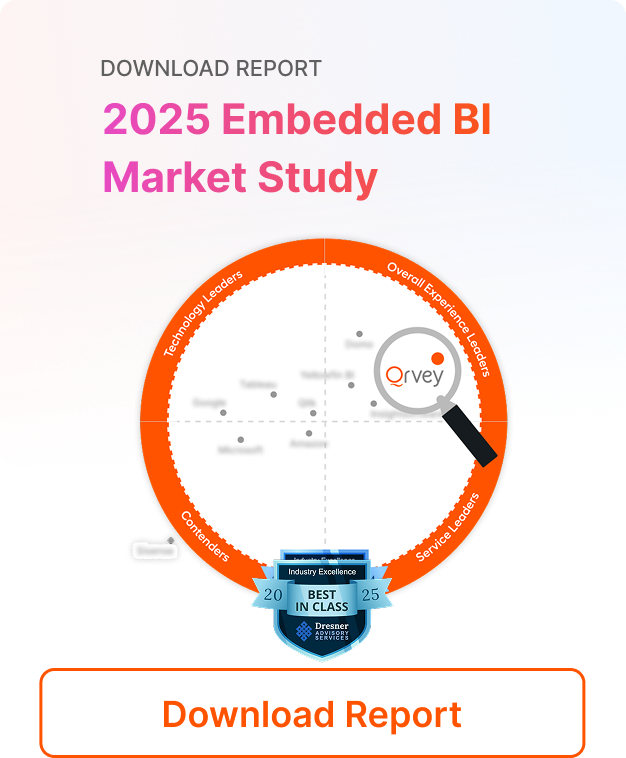
⚡Key Takeaways
- AI is revolutionizing SaaS in 2026, driving efficiency, personalization, and smarter decision-making.
- Generative AI and embedded analytics are now core features, enabling real-time insights and automation.
- SaaS businesses adopting AI outperform competitors in speed, customer satisfaction, and innovation.
- Choosing between building or buying AI-powered features depends on resources, goals, and integration needs.
AI is no longer a buzzword—it’s the engine powering the next wave of SaaS innovation. If you’re searching for how artificial intelligence is transforming SaaS in 2026, you’re in the right place. From generative AI to embedded analytics, today’s SaaS platforms leverage AI to solve real business challenges: automating workflows, personalizing experiences, and unlocking data-driven decisions. This article delivers actionable insights, expert perspectives, and real-world stats to help you understand, adopt, and maximize AI in your SaaS business. Let’s dive into the current state, use cases, and best practices for AI-powered SaaS.
The New Wave of AI: Generative AI
Generative AI is redefining what’s possible in SaaS. By creating new content, code, and data patterns, generative models empower platforms to automate tasks, generate personalized recommendations, and streamline development. SaaS companies now use generative AI for everything from customer support chatbots to automated report generation and creative content production. The result? Faster innovation cycles, reduced manual effort, and enhanced user experiences. As generative AI matures, expect even more transformative applications—making SaaS smarter, more adaptive, and increasingly indispensable.
Embedded Analytics: AI’s Impact
Embedded analytics powered by AI is a game-changer for SaaS platforms. Instead of exporting data to external tools, users get actionable insights directly within their workflow. AI-driven embedded analytics enables real-time dashboards, predictive modeling, and automated alerts—without heavy coding or technical expertise. Platforms like Qrvey offer seamless integration, allowing businesses to visualize trends, monitor KPIs, and make informed decisions instantly. This shift not only boosts productivity but also democratizes data access, empowering every user to leverage analytics for better outcomes.
The Role of AI In SaaS in 2026
In 2026, AI is central to SaaS strategy. It powers everything from customer onboarding to advanced analytics, automating repetitive tasks and surfacing insights that drive growth. AI enhances personalization, optimizes pricing, and predicts churn, making SaaS platforms more responsive and competitive. Companies leveraging AI report higher retention rates, faster product development, and improved customer satisfaction. As AI tools become more accessible, even smaller SaaS providers can harness their benefits—leveling the playing field and accelerating innovation.
5 Use Cases for AI In SaaS
AI’s versatility in SaaS is evident across industries. From embedded analytics and customer support automation to predictive maintenance and personalized marketing, AI-powered SaaS solutions deliver measurable value. Below are key use cases, each illustrating how AI transforms business processes and user experiences.
Use Case #1: Embedded Analytics
Embedded analytics is the cornerstone of AI in SaaS. Platforms like Qrvey integrate advanced AI features, enabling users to analyze data, generate reports, and visualize trends—all within the application. This eliminates the need for external BI tools, streamlining workflows and reducing costs. AI-driven analytics provide real-time insights, predictive modeling, and automated alerts, empowering users to make data-driven decisions instantly. The seamless integration means businesses can scale analytics capabilities without heavy technical investment.
Use Case #2: Customer Support Automation
AI-powered chatbots and virtual assistants are transforming SaaS customer support. These tools handle routine inquiries, resolve issues, and escalate complex cases—reducing response times and improving satisfaction. Natural language processing enables bots to understand context and deliver personalized solutions, freeing human agents for higher-value tasks. Companies adopting AI-driven support report lower costs and higher retention rates.
Use Case #3: Predictive Maintenance in SaaS
AI enables predictive maintenance by analyzing usage patterns and system logs to anticipate failures before they occur. SaaS platforms use machine learning to monitor application health, schedule proactive updates, and minimize downtime. This approach reduces operational costs, enhances reliability, and improves user trust—especially in mission-critical environments like healthcare and finance.
Use Case #4: Personalized Marketing
AI-driven personalization tailors marketing campaigns to individual user behaviors and preferences. SaaS platforms leverage machine learning to segment audiences, optimize messaging, and automate campaign delivery. The result is higher engagement, conversion rates, and ROI. Marketers can test strategies in real time, adapting to trends and customer feedback instantly.
Use Case #5: Financial Forecasting
AI-powered SaaS solutions in finance automate forecasting, budgeting, and risk assessment. Machine learning models analyze historical data, market trends, and external factors to deliver accurate predictions. This enables finance teams to make informed decisions, allocate resources efficiently, and mitigate risks proactively.
Buy vs. Build AI SaaS Applications or Features
Deciding whether to buy or build AI-powered SaaS features depends on your business goals, resources, and integration needs. Buying offers speed and proven solutions, while building allows for customization and competitive differentiation. Evaluate costs, scalability, and long-term strategy before choosing the best approach.
Buy #1
Buying AI-powered SaaS applications or features is ideal for businesses seeking rapid deployment and minimal technical overhead. Vendors like Qrvey offer ready-to-integrate solutions with robust support, regular updates, and proven reliability. This approach reduces development time, lowers risk, and ensures access to the latest AI advancements. For organizations lacking in-house expertise, buying is often the most cost-effective and scalable option. It also allows teams to focus on core business activities while leveraging best-in-class AI capabilities.
Build #2
Building AI features from scratch offers maximum customization and control. Businesses with strong technical teams can tailor solutions to unique requirements, integrate proprietary algorithms, and differentiate their SaaS offerings. While building demands more resources and time, it enables deeper integration and innovation. Companies like Qrvey exemplify how custom-built AI can deliver specialized analytics, automation, and user experiences. However, consider the long-term maintenance, scalability, and talent needs before committing to a build strategy.
Generative AI in Embedded Analytics: Unlocking New Possibilities
Generative AI is unlocking new possibilities in embedded analytics. SaaS platforms now automate report generation, create dynamic dashboards, and personalize insights for every user. This technology accelerates decision-making, reduces manual effort, and empowers users to explore data in innovative ways.
Developer Productivity
Generative AI boosts developer productivity by automating code generation, testing, and documentation. SaaS teams can build features faster, reduce errors, and focus on strategic tasks. This leads to shorter release cycles and more robust applications.
Power User Content Generation
Power users benefit from AI-driven content generation, creating reports, presentations, and dashboards with minimal effort. SaaS platforms leverage generative models to suggest templates, automate formatting, and ensure consistency—saving time and enhancing output quality
End User Conversational AI
Conversational AI transforms end-user experiences by enabling natural language interactions. Users can query data, request insights, and receive personalized recommendations through chat interfaces. This democratizes access to analytics and makes SaaS platforms more intuitive
How AI is Implemented in SaaS Today & Adoption Data
AI adoption in SaaS is accelerating. Recent studies show that over 60% of SaaS businesses now offer AI-powered features, with adoption rates rising annually. Expert quotes and case studies highlight the competitive advantages of early adoption, including faster innovation and improved customer satisfaction.
Implementation / Adoption #1
Most SaaS platforms implement AI through APIs, cloud-based analytics, and pre-trained models. This enables rapid integration, scalability, and continuous improvement. Companies prioritize features like SaaS predictive analytics, personalization, and automation to deliver immediate value.
Implementation / Adoption #2
Best practices for AI adoption include starting with pilot projects, leveraging third-party tools, and investing in data quality. Comparing traditional vs. AI-enhanced SaaS, the latter offers faster deployment, smarter automation, and superior user experiences.
Pro Tip: Focus on incremental implementation to minimize risk and maximize ROI.
Additional Considerations of AI in Embedded Analytics
When implementing AI in embedded analytics, consider data privacy, scalability, and user training. Ensure compliance with regulations and prioritize transparency in AI-driven decisions. Evaluate the impact on existing workflows and invest in change management to drive adoption. Collaboration between business and technical teams is essential for successful integration. Regularly monitor performance, gather user feedback, and iterate on features to maximize value. Platforms like Qrvey provide resources and support to help businesses navigate these challenges and unlock the full potential of AI-powered SaaS analytics.
AI and Visual Analytics – Close Relations
AI and visual analytics are closely intertwined in modern SaaS platforms. AI enhances visual analytics by automating data preparation, identifying patterns, and generating dynamic dashboards. Users benefit from intuitive interfaces that simplify complex data exploration. Visual analytics powered by AI enables faster insights, better storytelling, and more informed decision-making. As AI evolves, expect even richer visualizations and interactive experiences—making analytics accessible to all users, regardless of technical expertise.
Categorizing Artificial Intelligence (AI) In SaaS
AI in SaaS can be categorized by capabilities, functional areas, learning techniques, application areas, algorithms, deployment models, industry applications, and ethical considerations. Understanding these categories helps businesses select the right AI tools and strategies for their needs.
By Capabilities
AI in SaaS delivers automation, prediction, personalization, and optimization. These capabilities streamline workflows, enhance user experiences, and drive smarter business decisions. From automating routine tasks to providing predictive insights, AI empowers SaaS platforms to operate more efficiently and respond dynamically to user needs.
By Functional Areas
AI transforms functional areas in SaaS, including marketing, sales, support, analytics, and operations. Each area benefits from tailored AI solutions—automated campaigns, intelligent customer service, advanced analytics, and optimized processes—enabling teams to achieve better outcomes and deliver greater value to customers.
By Learning Techniques
SaaS platforms leverage supervised, unsupervised, and reinforcement learning. These techniques allow AI to learn from data, adapt to user behavior, and improve over time. The result is smarter automation, more accurate predictions, and continuously evolving features that meet changing business requirements.
By Application Areas
AI’s application areas in SaaS include embedded analytics, conversational AI, predictive maintenance, and personalization. Each area harnesses AI to solve specific challenges, deliver actionable insights, and enhance user engagement, making SaaS platforms more versatile and impactful across industries.
By Algorithms and Approaches
SaaS platforms utilize algorithms such as decision trees, neural networks, clustering, and deep learning. The choice of approach depends on the problem, data type, and desired outcomes, enabling platforms to deliver tailored solutions for analytics, automation, and personalization.
By Deployment Models
AI in SaaS is deployed via cloud-based, on-premises, and hybrid models. Cloud deployment offers scalability and flexibility, while on-premises ensures control and security. Hybrid models combine both, allowing businesses to balance performance, compliance, and cost according to their needs.
By Industry Applications
AI-powered SaaS solutions serve industries like healthcare, finance, eCommerce, and marketing. Each industry benefits from specialized features—predictive analytics in finance, personalized recommendations in eCommerce, and automated diagnostics in healthcare—driving innovation and efficiency across sectors.
By Ethical and Philosophical Considerations
Ethical considerations in AI for SaaS include data privacy, bias mitigation, and transparency. Providers must ensure responsible use, safeguard user data, and address fairness in algorithms. Building trust through ethical AI practices is essential for long-term success and user confidence.
Categorizing Generative AI
Generative AI in SaaS is classified by functional areas, learning techniques, algorithms, application domains, industry use, and ethical considerations. This structure helps businesses choose and implement generative AI solutions that best fit their needs, ensuring responsible, effective, and innovative applications across diverse SaaS environments.
By Functional Areas
Generative AI enhances SaaS by enabling automated content creation, code generation, and data synthesis. These capabilities streamline workflows, personalize user experiences, and support rapid innovation, making SaaS platforms more efficient and adaptable to evolving business requirements.
By Learning Techniques
Generative AI in SaaS uses transformer models, GANs, and reinforcement learning. These advanced techniques allow platforms to generate novel outputs, adapt to user needs, and continuously improve, driving smarter automation and more creative solutions.
By Algorithms and Approaches
Generative AI employs deep learning, probabilistic modeling, and neural networks. Each approach is tailored to specific tasks, such as text generation or image synthesis, enabling SaaS platforms to deliver powerful, customized generative capabilities.
By Application Areas
Generative AI applications in SaaS include automated reporting, personalized recommendations, and creative content generation. These tools empower users to access insights, streamline operations, and enhance productivity directly within their SaaS platforms.
By Industry Applications
Industries such as marketing, education, and healthcare leverage generative AI in SaaS for tailored solutions. These applications drive innovation, improve efficiency, and deliver personalized experiences, transforming how organizations operate and serve their customers.
By Ethical and Philosophical Considerations
Ethical considerations for generative AI in SaaS include responsible content creation, copyright compliance, and fairness. Providers must ensure transparency, mitigate bias, and safeguard user interests to build trust and promote ethical AI adoption
The History of AI in Analytic Applications
AI’s journey in analytics began with rule-based systems and basic statistical models, providing foundational automation and reporting. As technology advanced, machine learning and deep learning transformed data analysis, enabling predictive and prescriptive insights that empowered businesses to anticipate trends and optimize decisions. SaaS platforms quickly adopted AI to automate reporting, detect anomalies, and personalize dashboards for users. Today, generative AI and embedded analytics represent the latest evolution, delivering real-time, actionable intelligence and democratizing access to advanced analytics. Understanding this history highlights the rapid progress and future potential of AI in analytics, guiding organizations toward smarter, data-driven strategies.
Application of AI in Modern Analytics Applications
Modern analytics applications leverage AI to streamline data processing, predict trends, democratize analytics, monitor systems, personalize experiences, and optimize business processes. AI’s integration enables organizations to make faster, smarter decisions, improve efficiency, and deliver tailored insights to users across diverse industries and use cases.
Streamlining
AI automates data cleaning, integration, and visualization, minimizing manual intervention and accelerating analysis. By handling repetitive tasks and standardizing workflows, AI allows teams to focus on strategic initiatives, reduces errors, and ensures data is consistently prepared for actionable insights.
Predictive Analytics
Machine learning models in analytics forecast outcomes, identify risks, and guide strategic decisions. By analyzing historical and real-time data, AI uncovers patterns and trends, enabling organizations to anticipate challenges, seize opportunities, and allocate resources more effectively for future growth.
Democratization of Analytics
AI-powered tools make analytics accessible to non-technical users, fostering a data-driven culture. Intuitive interfaces and automated insights empower all team members to explore data, generate reports, and make informed decisions, breaking down barriers to entry and promoting widespread adoption.
Monitoring and Alerts
AI continuously monitors system health, detects anomalies, and triggers alerts for proactive action. Automated surveillance ensures issues are identified early, minimizing downtime and enabling rapid response to potential threats or performance bottlenecks in analytics environments.
Personalization
AI tailors dashboards, reports, and recommendations to individual user needs, enhancing relevance and engagement. By learning user preferences and behaviors, AI delivers customized experiences, making analytics more intuitive and impactful for every stakeholder.
Optimizing Business Processes
AI identifies inefficiencies, recommends improvements, and automates routine tasks within analytics workflows. This optimization drives productivity, reduces costs, and enables organizations to adapt quickly to changing business requirements and market conditions.
2 Key Benefits of Adopting AI In Your SaaS
Adopting AI in SaaS delivers real-time insights, automation, and enhanced user experiences. Key benefits include improved decision-making, increased operational efficiency, and competitive differentiation, empowering businesses to innovate rapidly and respond to evolving customer needs.
Benefit #1: Advantage of AI in Embedded Analytics
AI-powered embedded analytics instantly delivers actionable insights within SaaS platforms. Users can visualize data, track KPIs, and make informed decisions directly in the application. This streamlines workflows, boosts productivity, and eliminates the need for external tools, making analytics accessible and efficient for all users.
Benefit #2: Real-Time, Data-Driven Insights
Qrvey’s embedded AI analytics delivers real-time, data-driven insights for SaaS platforms, integrating seamlessly without complex coding. Users benefit from instant access to actionable information, improving decision-making and operational efficiency.
Pro Tip: Choose platforms with intuitive interfaces to maximize adoption, streamline workflows, and enhance overall user satisfaction and engagement.
Challenges of Implementing AI In SaaS Applications
Implementing AI in SaaS faces challenges including privacy, bias, cost, and business alignment. Overcoming these obstacles is essential for successful adoption, requiring careful planning, robust security, and ongoing evaluation to ensure AI delivers value while meeting regulatory and ethical standards.
Privacy and Security
AI systems in SaaS must protect user data and comply with regulations. Strong encryption, access controls, and transparent privacy policies are vital to safeguard sensitive information and maintain user trust throughout the AI implementation process.
Acquired Bias
AI models can inherit biases from training data, affecting fairness and accuracy. Regular audits, diverse datasets, and bias mitigation strategies are necessary to ensure equitable outcomes and maintain the integrity of AI-powered SaaS solutions.
Cost – Power Consumption
AI demands significant computational resources, increasing costs and energy consumption. Optimizing models and leveraging efficient cloud infrastructure help manage expenses, making AI adoption more sustainable for SaaS businesses.
Making Business Sense
AI investments must align with business objectives. Evaluate return on investment, scalability, and user impact before deploying AI features to ensure they support strategic goals and deliver measurable value for the organization.
Bringing AI Supported Embedded Analytics Into Your Business with Qrvey
Integrating AI-supported embedded analytics with Qrvey transforms how businesses leverage data. Qrvey’s platform provides robust tools for data collection, transformation, analysis, and visualization, all embedded directly into your SaaS applications. This empowers teams to make faster, smarter decisions with real-time, actionable insights. AI-driven features automate complex analytics tasks, deliver predictive insights, and streamline workflows, improving operational efficiency and business outcomes. By embedding these capabilities, organizations foster a data-driven culture, ensuring every stakeholder has access to the information they need. Qrvey’s seamless integration makes advanced analytics accessible, scalable, and impactful for businesses of any size.

Arman Eshraghi is the CEO and founder of Qrvey, the leading embedded analytics solution for SaaS companies. With over 25 years of experience in data analytics and software development, Arman has a deep passion for empowering businesses to unlock the full potential of their data.
His extensive expertise in data architecture, machine learning, and cloud computing has been instrumental in shaping Qrvey’s innovative approach to embedded analytics. As the driving force behind Qrvey, Arman is committed to revolutionizing the way SaaS companies deliver data-driven experiences to their customers. With a keen understanding of the unique challenges faced by SaaS businesses, he has led the development of a platform that seamlessly integrates advanced analytics capabilities into software applications, enabling companies to provide valuable insights and drive growth.
Popular Posts
Why is Multi-Tenant Analytics So Hard?
BLOG
Creating performant, secure, and scalable multi-tenant analytics requires overcoming steep engineering challenges that stretch the limits of...
How We Define Embedded Analytics
BLOG
Embedded analytics comes in many forms, but at Qrvey we focus exclusively on embedded analytics for SaaS applications. Discover the differences here...
White Labeling Your Analytics for Success
BLOG
When using third party analytics software you want it to blend in seamlessly to your application. Learn more on how and why this is important for user experience.








